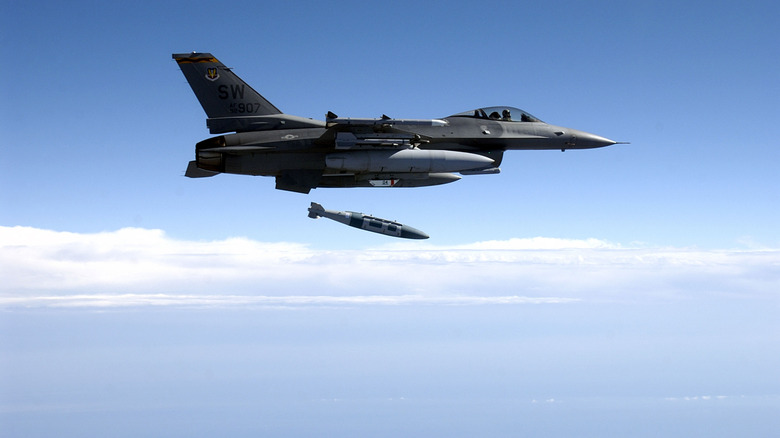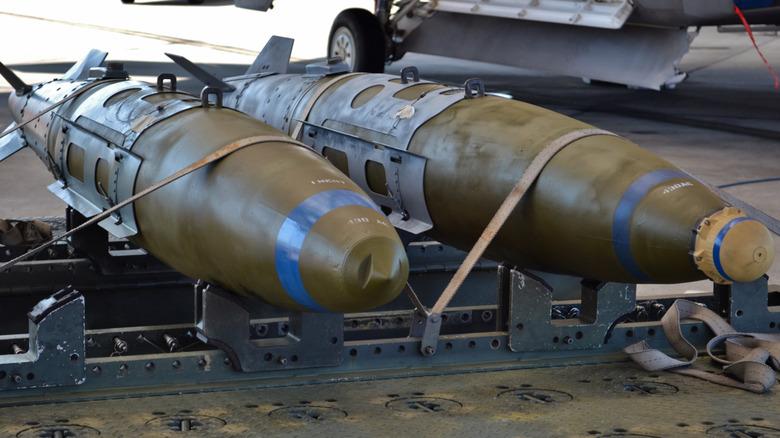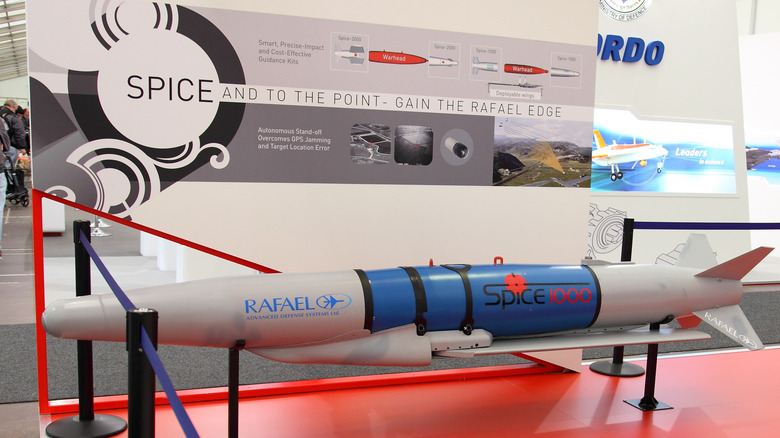How Do JDAM And SPICE Bombs Work? The Tech Behind Israel's Assault On Iran
Modern warfare does not always rely on massive missile strikes or high-profile attack drones that can drop their own precision bombs. Sometimes, it's the precision of guided bombs that does the job. That's what is believed to have happened in recent Israeli airstrikes against targets deep inside Iran. The official details are limited; however, the reports suggest that Israel used two highly capable munitions: the JDAM and the SPICE bomb. Both of these are designed to turn basic gravity bombs into smart, guided weapons.
While the JDAMs and SPICE kits have been around for years, what makes them stand out is how they've evolved to meet today's needs. They offer long-range, flexible targeting and impressive accuracy — basically, everything needed for a perfect attack. As a result, they give air forces a way to hit precise coordinates from far away without risking aircraft or relying on something like an expensive Tomahawk cruise missile. But how do these systems actually work, and why are they preferred for these kinds of missions?
JDAMs: Old bombs with smart navigation and impressive adaptability
The JDAM, short for Joint Direct Attack Munition, is basically a smart tail for a traditional bomb. It uses GPS and inertial guidance to direct the bomb mid-air toward its target. The bomb follows satellite-fed coordinates using onboard sensors and small control fins. Under ideal conditions, it can land within 13 meters of its mark, and it works in all kinds of weather.
Interestingly, while the JDAMs are used for their known accuracy, they are also relatively cheap and easy to use. The tail kits cost around $20,000 each, added to the price of an existing warhead. They are also suitable to use with fourth-generation Israeli jets like the F-15 and F-16, which can drop JDAM-equipped bombs like any regular one. This ability to quickly adapt an old bomb into a smart and accurate weapon can make a big difference in an emergency situation.
How SPICE takes precision even further
Now SPICE, which stands for Smart, Precise Impact, Cost-Effective, takes things a step further. It is developed by Israel's Rafael Advanced Defense Systems, and it uses multiple layers of guidance to work, like GPS, inertial navigation, and even electro-optical and infrared tech. Its standout feature is scene-matching. Basically, pilots load target images into the bomb ahead of the mission, and once it's in the air, SPICE compares what it sees to those images and then locks onto the target visually. That means it can strike even when other systems are jammed, which makes it especially useful in sensitive or heavily defended zones.
SPICE comes in different variants like the SPICE 250, 1000, and 2000, with the numbers reflecting their payload class. Some models, like the SPICE 250 ER, are intentionally given a small engine, giving them a range of up to 150 kilometers. Plus, it doesn't stop at one target either. SPICE allows pilots to hit multiple locations in a single run without returning to base.


